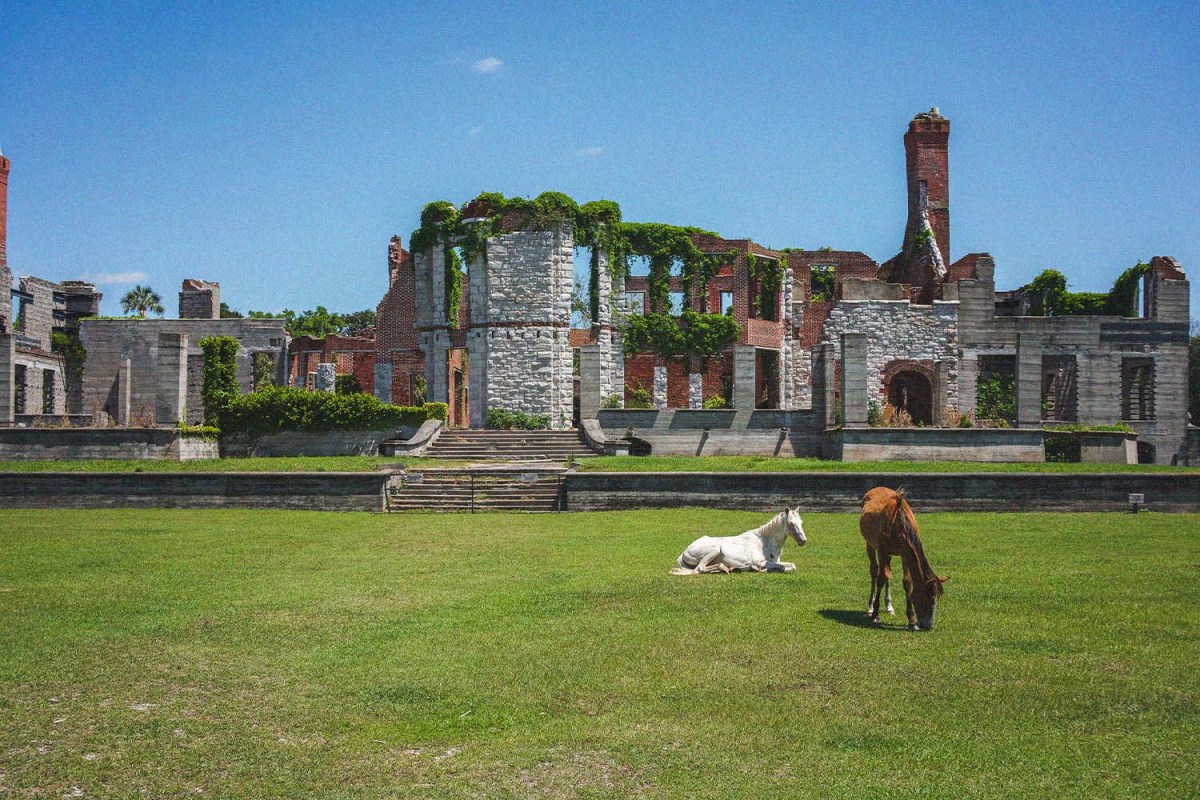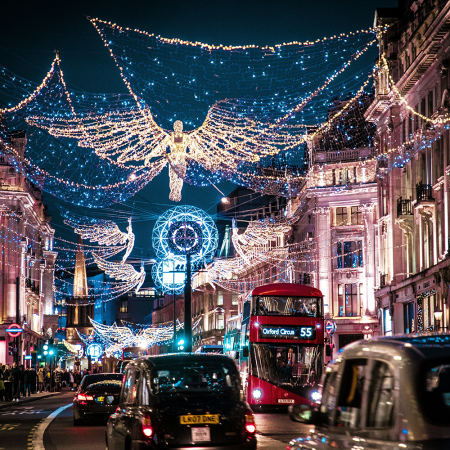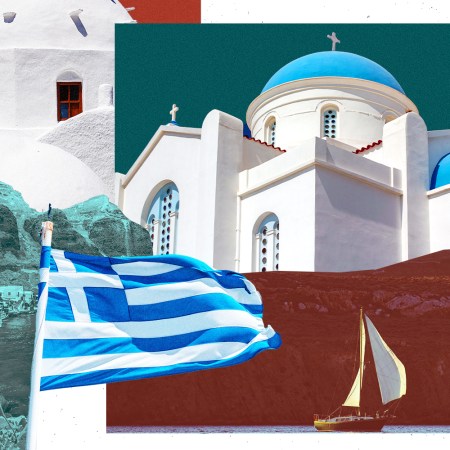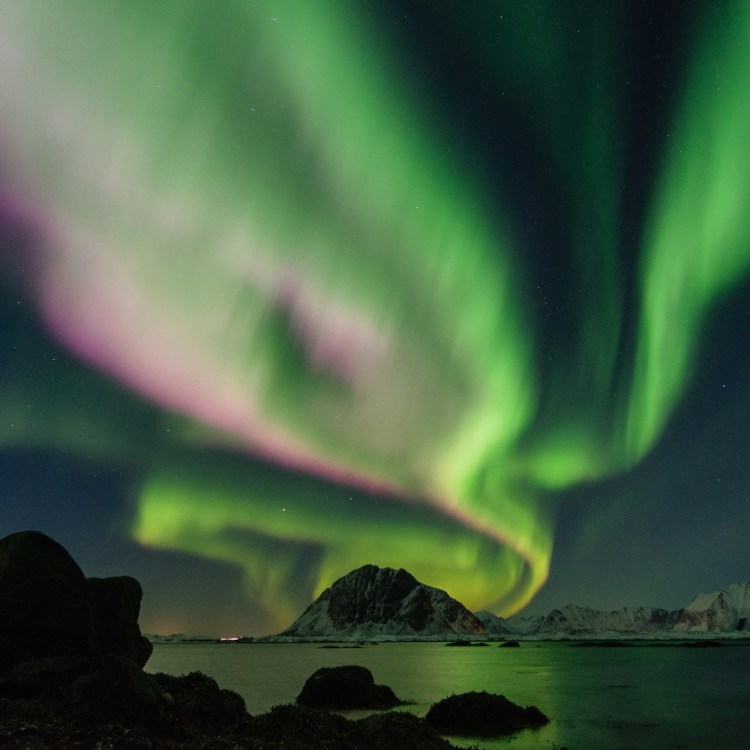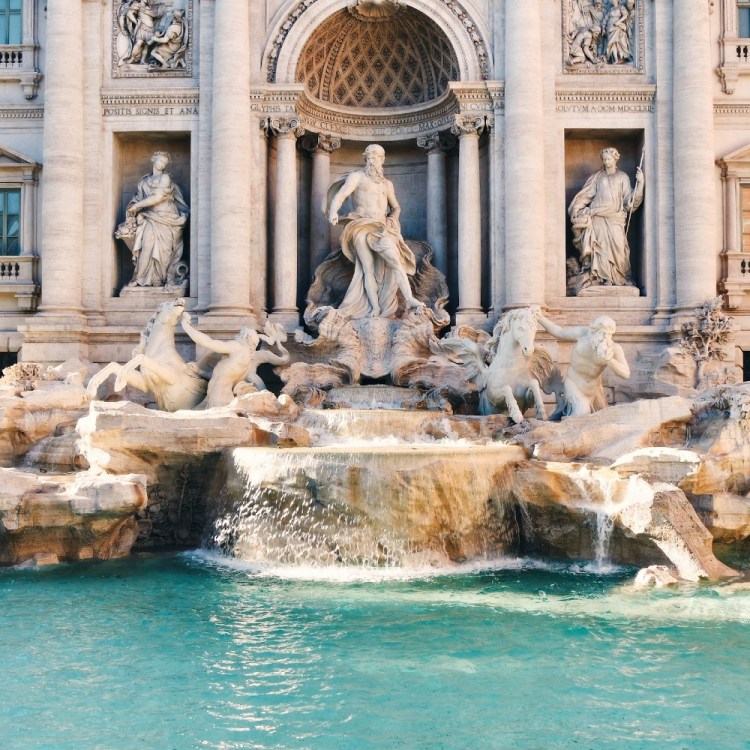With its wild horses, falconry lessons, remote beaches and Hogwarts-sized historic mansions, the barrier islands along Georgia’s coast look more like the backdrop for a Victorian novel than your typical American coastline. Underrated compared to the more touristy beaches in nearby Florida, Georgia’s shimmering shore is a unique place that combines staggering beauty and remote wilderness with architectural extravagance and pool food so ritzy you feel guilty eating in a bathing suit.
Georgia boasts 15 barrier islands (which differ from oceanic islands in that they run parallel to the shore, often formed by tides piling sand) span 110 miles of Atlantic coastline, each one drastically varying in size, experience and accessibility — of all the islands, only a few have roads, while most are far-flung realms dominated by equines, driftwood and lemurs. Yes, lemurs. No matter the beachy vibe you’re chasing, be it bougie or bucolic (or a bit of both), Georgia’s islands more than meet muster.

Scratch that kitschy itch on Tybee Island
Georgia’s northernmost island — and its most touristy — is Tybee, a family-friendly oasis located just south of the Savannah River from South Carolina and 20 minutes from Savannah. The quintessentially casual beach town, lined with cute ice cream shops, B&Bs and beach bars slinging hurricanes the size of punch bowls, it’s one of the easiest islands to get to and explore. Its beaches are popular for swimming, sunbathing and dodging seagulls with kites, while less sandy attractions include the Tybee Island Light Station and Museum, the oldest and tallest lighthouse in the state (pro tip: book a sunset tour to the top of the lighthouse to have your mind blown). Across the street, the 1899 Military Battery contains the Tybee Island Museum, and for more naval history, check out nearby Fort Pulaski National Monument, a Civil War-era fort that looks like a brick Pentagon, complete with moat and surrounding nature trails. Other familial fodder on Tybee runs the gamut from dolphin tours and sea kayaking through salt marshes to feasting on sushi nachos, cornbread waffles and shrimp ’n’ grits at ice cream shop-turned-restaurant, The Sundae Cafe.

Camp under Spanish moss on Skidaway Island
Surrounded by creeks and sandwiched between rugged Wassaw Island and Green Island, Skidaway Island is a place that combines tranquil nature with lavish luxury. While home to numerous private residences and snazzy golf courses, the main attraction here is Skidaway Island State Park, lined with six miles of lush nature trails and flanked by a boardwalk and observation tower. A prime place to camp under Spanish moss and live oaks, the park offers sites for tents and RVs, as well as a few comfy cabins with screened porches and merciful AC. Nearby Wassaw national Wildlife Refuge, a remote and undeveloped landscape of maritime forest and migratory birds, is only accessible by boat.

Journey to Madagascar via Georgia on St. Catherines Island
You could be forgiven for mistaking Georgia’s next barrier island for Madagascar, as the African island and St. Catherines are the only two places on Earth where lemurs roam free. Initially released here as an experiment to see if the Beanie Baby-looking primates could be effectively managed in a new environment, their population has indeed thrived — and that’s largely a testament to the island’s preserved nature. Only reachable by boat, surrounded by untouched coastline and dense salt marshes, it’s a place where Spanish moss billows in the sea breeze and where a huge sea bluff at the island’s northern edge provides an awe-inspiring oceanic panorama. Unlike most barrier islands in Georgia, even the wildly remote ones, St. Catherines is only accessible to visitors along its coast, as the interior is protected for conservation projects (see: lemurs).

Find refuge from Wi-Fi on Blackbeard Island
Another island that prioritizes nature over development, Blackbeard Island is a pastoral enclave comprised entirely by the Blackbeard Island National Wildlife Refuge. Here, a far-flung landscape of wetlands, marshes, pine forests and coastline is home turf for sea turtles, migratory birds and white-tailed deer, the latter of which are fair game during hunting season. Only accessible via private boat or local charter, it’s worth the extra effort for the opportunity to fish, bike, hike and swim amidst utter serenity, miles from civilization and the distractions of Wi-Fi.

Stay in a Clue-worthy mansion on Sapelo Island
Located midway down the Georgia coast, Sapelo Island contains 16,500 acres of state-managed land, along with the 434-acre Hog Hammock, a small community that’s home to Gullah-Geechee descendants of enslaved West Africans. Without any roads, the island is only reachable by ferry, and while outdoor activities here include pristine beaches and the iconic Sapelo Island lighthouse, the Georgia Department of Natural Resources manages the palatial R.J. Reynolds Mansion, a 200-year-old estate with a private beach, marble sculptures and lodging for groups of 8-25. Considering the manor contains themed rooms like a creepy circus room (!), a bowling lane, a billiards room and library, coupled with the faraway remoteness of the locale, this place has real-life Clue written all over. Or if you’d rather not get entangled in a murder mystery, the island’s other lodging option is the Cabretta Campground.

Blend nature and luxury on Little St. Simons Island
The cream of the coastal crop, four islands make up Georgia’s suave-sounding Golden Isles, home to immense nature and equally immense architecture and American history. The northernmost of the Golden Isles, and the most remote, is Little St. Simons Island. With 11,000 acres and seven miles of beachfront, this not-so-little island abounds with nature and adventure, from sea kayaking and bird-watching to beach-combing. The Lodge is the island’s primary accommodations — a mix of opulence and rusticity where six historic cottages are immersed in nature and accented by a saltwater pool and legit farm-to-table dining, wherein ingredients include oysters from Eagle Creek and vegetables and herbs from on-site gardens.

Discover falconry and five-star dining on Sea Island
The ritziest of Georgia’s barrier islands is Sea Island, a nautical enclave so decadent that it’s a full-blown gated resort community anchored by castle-sized hotels that look more European than Georgian. The Cloister at Sea Island is the marquis abode, a vast five-star resort with fine dining restaurants, seasonal cocktails, private cottages, sprawling suites and a show-stopping, stone-clad lobby. The pinnacle of poolside luxury, the island’s Beach Club — home to a crystalline zero-entry pool surrounded by palm trees — raises the bar on pool food with heirloom vegetable crudités, blackened grouper tacos and island kabob bowls brimming with coconut rice, chicken, grilled pineapple and mango chutney. Beyond the pool, the island contains five miles of private beachfront, with outdoorsy activities like kayaking, sailing and swimming. Some of the coolest amenities, though, are avian. In addition to a posh solarium in the main building, home to chirping peach-faced lovebirds, one of the recreation options offered at The Cloister is guided falconry lessons, where guests embark on walks through a marsh and get to hold a red-tailed hawk.

Combine maritime history with comfort food on St. Simons Island
The next Golden Isles getaway is St. Simons, another drivable island that’s a tad larger — and less elite — than Sea Island immediately to the north. More residential than the rest of the Golden Isles, St. Simons has a quaint community vibe with its neighborhood cafes, shops, mini golf and restaurants. In fact, with more than 70 restaurants to choose from, it’s an island fit for foodies, with myriad options like burger-slinging Brogen’s South, ECHO for chic waterfront decor and seafood mac & cheese and Dulce Dough, a cute cottage-like bakery specializing in doughnuts (get the buttercream long john with salted caramel glaze). Beyond its bakeries and beaches, wartime history is on full display here too, as seen as Fort Frederica National Monument and the World War II Home Front Museum, where visitors can learn about the attack on American ships by German U-boats in 1942 13 miles off the coast of St. Simons.
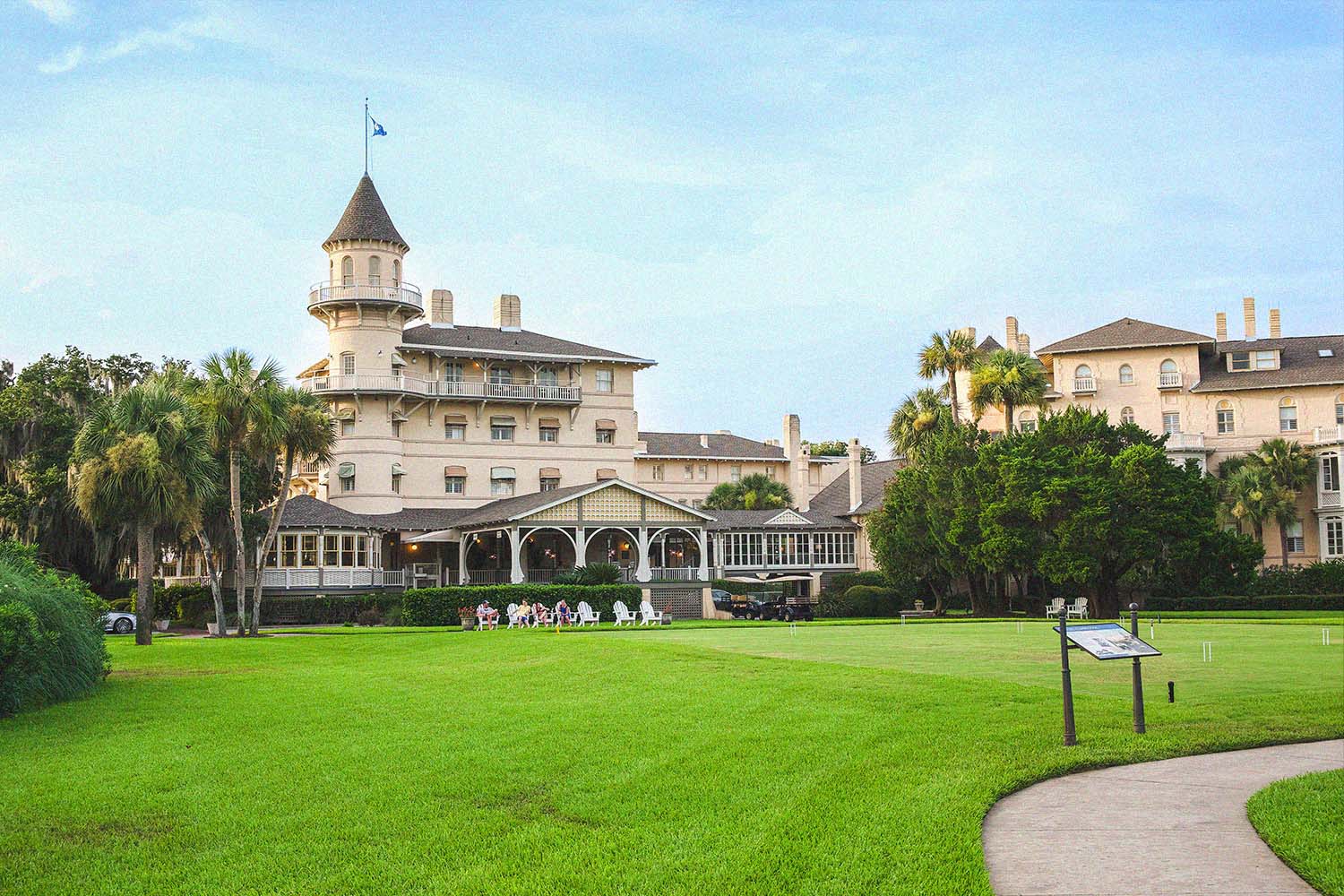
Channel your inner Vanderbilt on Jekyll Island
With its larger-than-life manors and luxe American lore, Jekyll Island is the most gilded of Georgia’s Golden Isles. Accessible by car (with an entry fee of $8 per vehicle), the island’s claim to fame is its reputation as a millionaire’s beachy playground. During the Industrial Age, this was an aristocratic winter retreat for the rich and famous, who dwelled in opulent cottages and mansions that, along with meticulously manicured golf courses, now comprise Jekyll’s Historic District. Once a haven for American royalty like the Vanderbilts and Rockefellers, nowadays the island is a go-to destination for honeymooners and moneyed vacationers looking to bask at the main hotel, the Jekyll Island Club. The resort offers guided trolley tours across the tree-lined property, along with dining options like the swanky Grand Dining Room and The Wharf, a seafood haunt on a marsh-side pier. On the ocean side of the island, you’ll find more casual alternatives like mini golf and Tortuga Jack’s, a beachfront bar with margaritas, nachos and guacamole.

Little Raccoon Key
Perched off the coast of Jekyll Island, Little Raccoon Key is a tiny reef island known for glamping. Wildlife is on full display here, from dolphin pods and sea turtles to rare Privet trees and an ancient reef made of 10,000-year-old oyster shells. Accessible by private boat or charter, the key is primarily known for its solar-powered campground, outfitted with luxury canvas tents filled with memory-foam mattresses, wood-fired stoves, outdoor showers and sustainable toiletries. Throughout the glampground, Adirondack chairs and hammocks provide plenty of opportunities for basking in nature. Those not looking to stay overnight can book day trips available from Jekyll Island Marina, which include snacks, water, biology excursions and history presentations, while special outings include oyster reef roasts and lowcountry boils.
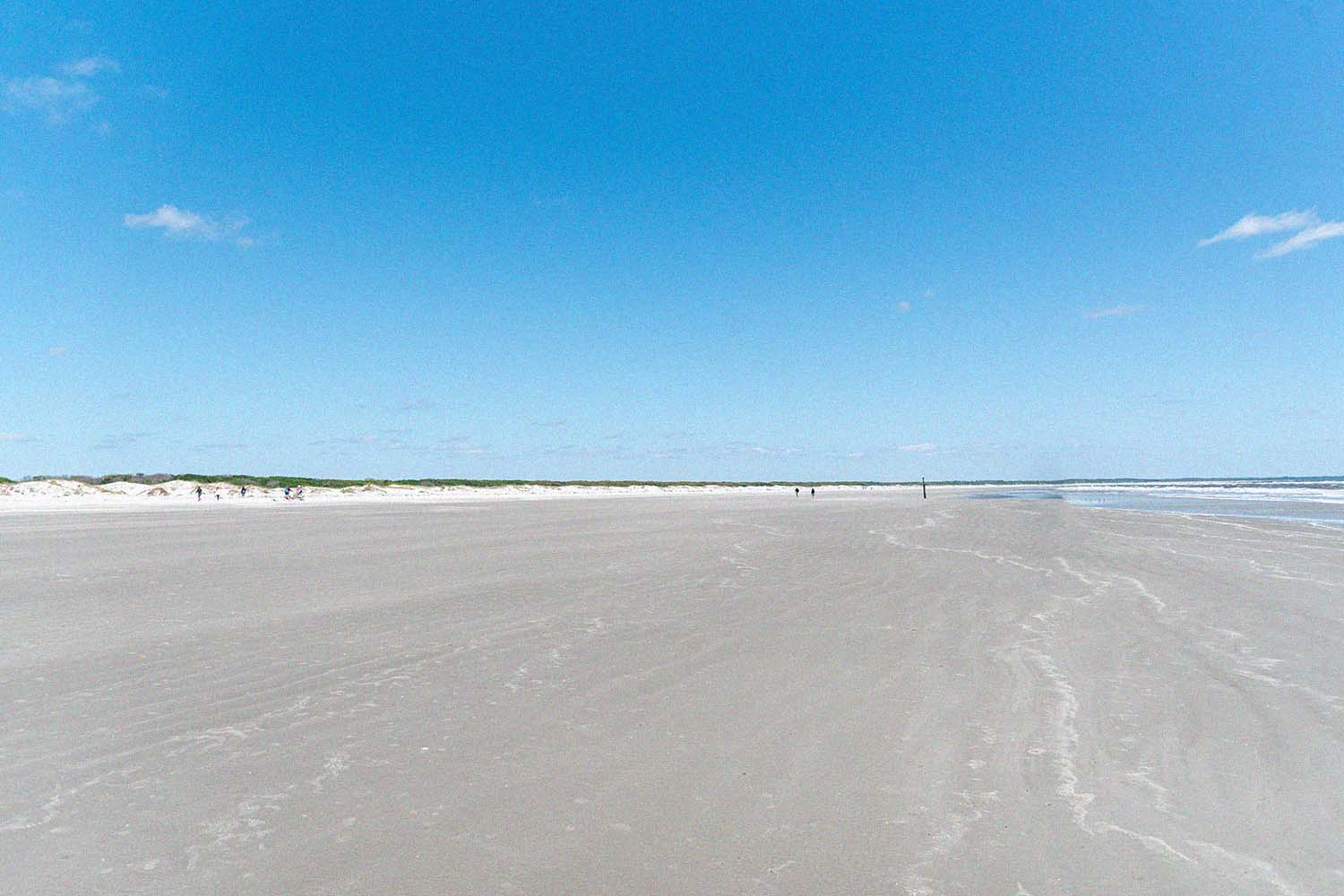
Find wild horses and wild beaches on Cumberland Island
The southernmost barrier island in Georgia is also the state’s largest and most primitive. Cumberland Island, clocking in at 16 miles long and up to three miles wide, is home to Cumberland Island National Seashore, a place of pristine wilderness and timeworn history that’s only accessible via a 45-minute ferry ride from mainland St. Mary’s. Once ashore, the island is your oyster — and ripe for rugged exploration. Bikes are available to rent, and miles of densely wooded trails, through Spanish moss and marshland, teem with discovery. The coast boasts untouched beachfront as far as the eye can see, and although most of the island remains unmarred by man-made development, one fascinating relic is Dungeness Mansion, a former residence for the Carnegies that’s long since crumbled into stone ruins. Nowadays, visitors can stroll the grounds and marvel at the former 35,000-sq.-ft. mansion. While humans haven’t dwelled here since 1959, when the estate caught fire, the ruins are a frequent stomping ground for a herd of feral horses, which have had some presence on the island since Spanish settlers first brought them as livestock in the late-1500s. In the ensuing centuries, whether brought as transportation aid for plantations in the 1800s or as ritzy recreation for the Carnegies, the horse population has maintained — today, it’s estimated that Cumberland Island is home to nearly 150 feral horses.
This article appeared in an InsideHook newsletter. Sign up for free to get more on travel, wellness, style, drinking, and culture.
